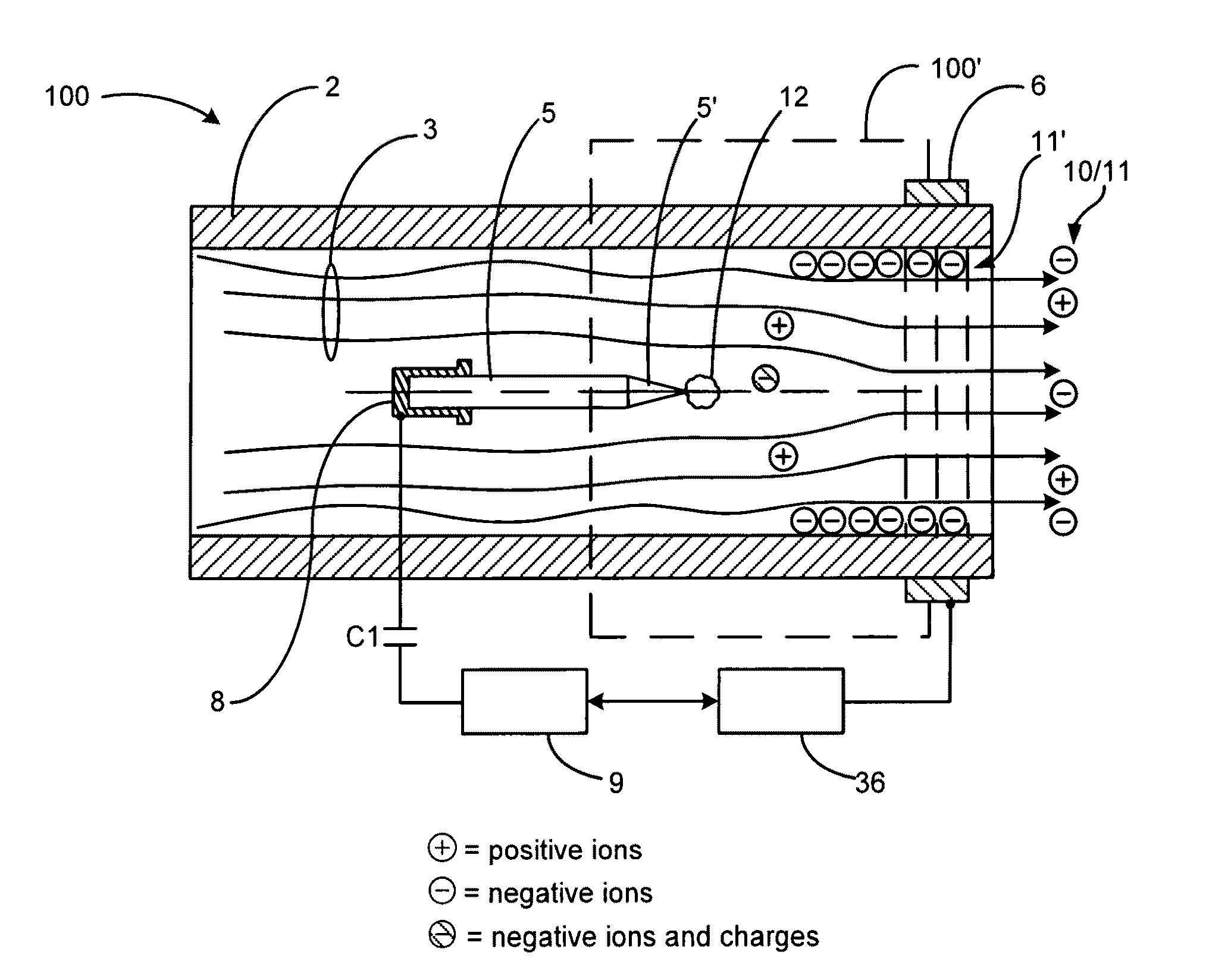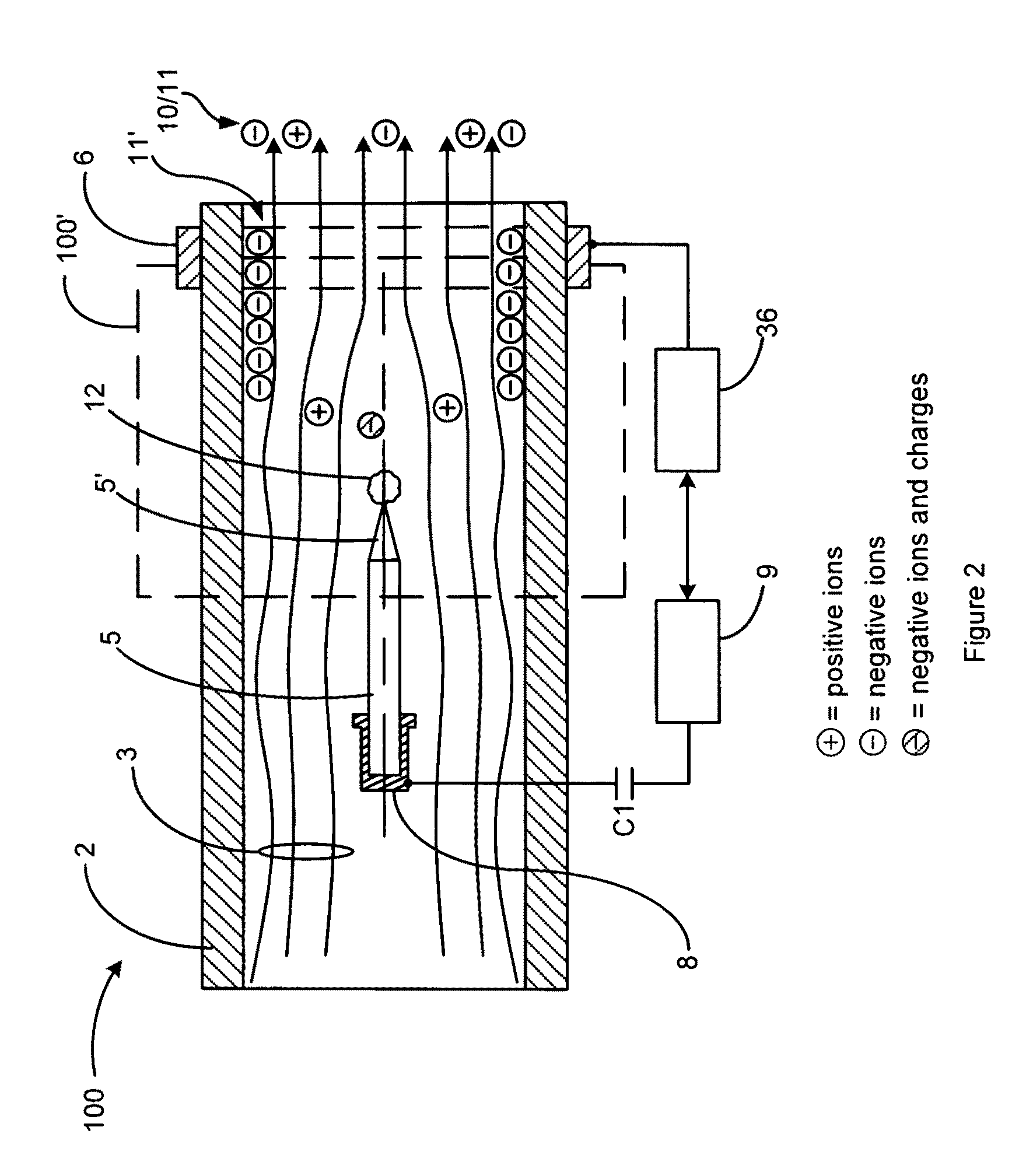Self-balancing ionized gas streams
a technology of ionized gas and self-balancing, which is applied in the direction of electrostatic spraying apparatus, electric discharge tube, corona discharge, etc., can solve the problems of unsatisfactory electrical fields, undesirable contaminants along with the desired gas ions, diminishing contamination, etc., and promoting the conversion of a high number of electrons, increasing the probability of elastic collision/attachment, and increasing the number of negative ions
- Summary
- Abstract
- Description
- Claims
- Application Information
AI Technical Summary
Benefits of technology
Problems solved by technology
Method used
Image
Examples
Embodiment Construction
[0046]FIG. 2 is a schematic representation illustrating preferred methods and apparatus for creating an ionized gas stream 10 / 11 (using, for example, electronegative / electropositive / noble gases) with at least substantially electrically-balanced concentrations of charge carriers over a wide range of gas flow rates. This goal is accomplished through an ionization cell 100′ that includes an insulated reference electrode 6 and an ionizing electrode 5 capacitively-coupled to a high voltage power supply (HVPS) 9 preferably operating in the radio frequency range.
[0047]As shown in FIG. 2, the preferred inventive ionizer 100 comprises at least one emitter (ionizing corona electrode) 5 located inside a through-channel 2 that accommodates the gas flow 3 that defines a downstream direction. The electrode 5 can be made from conductive material such as tungsten, metal based alloys, coposits (ceramics / metal) or semi-conductive material such as silicon and / or may be made of any material and / or have...
PUM
 Login to View More
Login to View More Abstract
Description
Claims
Application Information
 Login to View More
Login to View More - R&D
- Intellectual Property
- Life Sciences
- Materials
- Tech Scout
- Unparalleled Data Quality
- Higher Quality Content
- 60% Fewer Hallucinations
Browse by: Latest US Patents, China's latest patents, Technical Efficacy Thesaurus, Application Domain, Technology Topic, Popular Technical Reports.
© 2025 PatSnap. All rights reserved.Legal|Privacy policy|Modern Slavery Act Transparency Statement|Sitemap|About US| Contact US: help@patsnap.com



